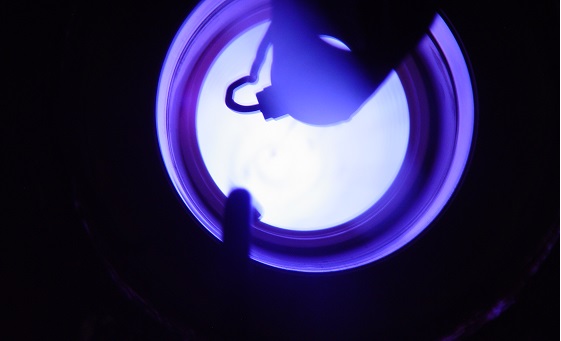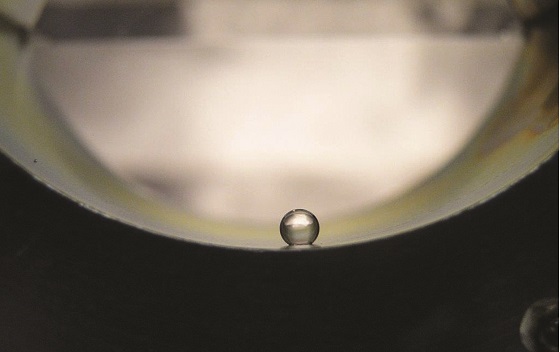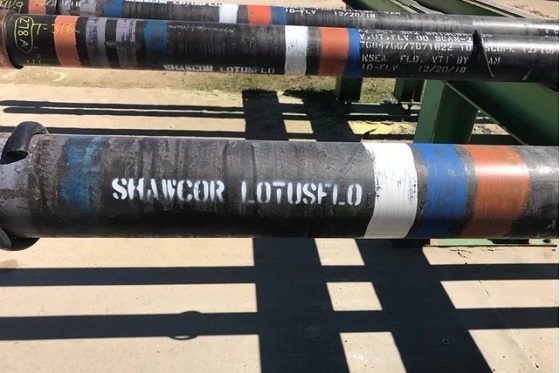Materials scientists at nonprofit applied research and development (R&D) organization Southwest Research Institute (SwRI) (San Antonio, Texas, USA) recently developed a new superhydrophobic coating and a unique process for applying it to the internal surfaces of long tubular structures.1
The technology is primarily designed to mitigate or prevent hydrates and other deposits from adhering to subsea pipelines, where they can block the flow of oil and potentially contribute to corrosion.
“Offshore oil drilling faces a number of challenges in extracting petroleum from beneath the ocean floor,” explains Michael Miller, an SwRI scientist. “Pipes are frequently clogged by substances like asphaltenes, which are sticky and tar-like molecular substances found in crude oil; paraffins, soft waxy materials that are derived from petroleum; and inorganic scales, which are mineral deposits that form when water is mixed with different types of salty liquids.”
Lotus Process Technology
Hydrates are ice-like solids composed of water and a gas, typically methane or carbon dioxide. Hydrates have a density close to that of ice and can look like slushy ice. However, the gas molecules contained in hydrates stabilize the crystals and allow hydrates—unlike ice—to form at temperatures as high as 70 °F (21.1 °C) in hydrocarbon systems, such as production-stream flow lines.

Hydrates can deposit on the pipe’s inner wall and collect until they completely block the flow line and stop the transport of hydrocarbons to the processing facility. In response, scientists at SwRI developed a coating system that is now known commercially as LotusFlo.
“We’ve developed a family of coatings and a process technology named Lotus, a reference to the lotus flower, which has similar superhydrophobic properties,” says Miller. “We produce these coatings using a vacuum process in which a plasma—a state of matter consisting of free electrons plus ionized atoms and molecules—is ignited inside the entire length of the pipe, while introducing one or more chemicals. The process selectively fragments the chemicals into ions that are then accelerated onto the pipe surface where they immediately undergo polymerization to form a thin, glass-like, durable coating.”
Unique Surface Properties
In the past, hydrate formation was often prevented using either chemical additives—which can pollute the surrounding ocean—or physical methods, such as heating jackets or high-frequency electromagnetic fields, according to SwRI, which says these techniques add expense and engineering complexity.
Furthermore, when these methods fail, removing hydrate plugs can be costly. In deep petroleum wells, paraffin wax and asphaltene components in the oil can also deposit on the pipe’s inner wall and impede product flow from the well, necessitating costly prevention and remediation measures.

By contrast, SwRI says the Lotus family of coatings is unique in that their surface properties, such as surface energy or tension, can be tailored chemically to prevent different kinds of deposits from adhering to the pipe’s interior. The coating, which is applied to pipes under vacuum conditions, contains silicon, oxygen, carbon, and fluorine. Despite the harsh conditions of the drilling environment, SwRI officials say the coating can last for years and is not harmful to the surrounding environment.
The coating process involves linking several 40-ft (12.2-m) sections of pipe together in very low atmospheric pressures. The interiors essentially act as a vacuum chamber, with an end unit on either side of the pipe providing the vacuum source. An electrode is strung through the pipe from one end to the other and suspended in the middle of the pipe.
Volatile molecules are then introduced into the evacuated pipe to ignite highly ionized gas molecules, or plasma, inside the entire length of the pipe structure. The plasma, once ignited, emits light and fragments in a special way to allow control over the chemical precursor molecules to form other ions in the plasma, which are then accelerated very rapidly onto the internal surface of the pipe. When the ions collide on the interior surface, they undergo a polymerization reaction that results in the partially inorganic, glass-like coating.
Producing at Larger Scale
Under an exclusive licensing and technology transfer agreement, the LotusFlo coating technology was transitioned in 2018 to energy services company Shawcor (Toronto, Ontario, Canada), which began full-scale production of coated pipe at its existing facility in Channelview, Texas, USA. This location was chosen strategically to serve Gulf of Mexico market needs.
From late 2018 through July 2019, Shawcor then installed the coating for the Shell Vito deepwater project, located ~150 mi (241.4 km) southeast of New Orleans, Louisiana, USA. The scope consisted of coating the internal diameter of five wells and 72,000 ft (21,945.6 m) of tubulars to be installed in the Gulf of Mexico.

In all, the process required ~8,500 manhours, with no safety incidents recorded during plant mobilization, commissioning, or production. The energy services company, which describes the product as a diamond-like carbon (DLC) coating technology, announced in November 20192 that the Shell Vito project was successfully completed. The group adds that it is among the first companies to industrialize and produce a DLC product on a large scale.
Then, in December 2019, R&D Magazine recognized LotusFlo and the unique process to apply the coating to pipes as one of the 100 most significant innovations of 2019.3 According to SwRI, the R&D 100 Awards are among the most prestigious innovation awards programs, with winners named each year since 1963. Recipients hail from research institutions, academic and government laboratories, Fortune 500 companies, and smaller organizations. Winners were honored on December 5, 2019, at a ceremony in San Francisco, California, USA.
Sources: SwRI, www.swri.org; Shawcor, www.shawcor.com.
References
1 “SwRI Develops Superhydrophobic Coating, Process for Subsea Pipelines,” SwRI Press Releases, May 31, 2018, https://www.swri.org/press-release/superhydrophobic-coating-process-subsea-pipelines (Feb. 23, 2020).
2 “First Project with LotusFloTM Successfully Completed,” Shawcor Media Center, Nov. 27, 2019, https://www.shawcor.com/en/media-center/21625710044/lotusflo-project-success (Feb. 23, 2020).
3 “SwRI Develops Superhydrophobic Coating for Offshore Drilling Pipes,” SwRI Press Releases, Nov. 19, 2019, https://www.swri.org/press-release/superhydrophobic-coating-offshore-drilling-pipes-lotusflo-rd-100-2019 (Feb. 23, 2020).